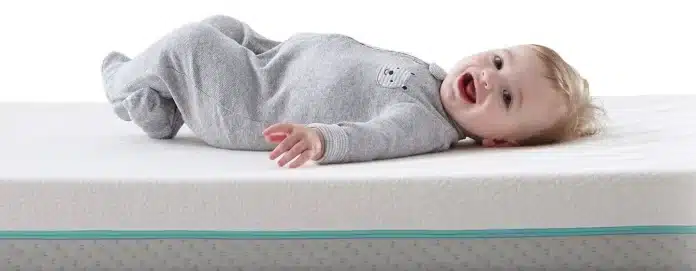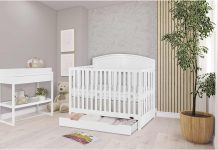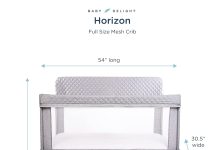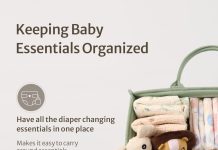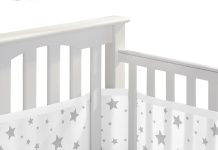Picking the right crib mattress firmness for infants can sometimes feel daunting, but fear not because we’re here to help! When it comes to ensuring a safe and comfortable sleep environment for your little ones, choosing the correct level of firmness is crucial.
In this article, we’ll guide you through the various factors to consider when selecting a crib mattress that adequately supports your baby’s growing body. We’ve covered you, from firmness guidelines to considering your baby’s needs. So, let’s start on this journey to finding the perfect crib mattress for your bundle of joy!
Review contents
Importance of Choosing the Right Crib Mattress Firmness
When it comes to the safety and comfort of our little ones, choosing the right crib mattress firmness is of utmost importance. Infants spend significant time sleeping, which is essential for their growth and development. A mattress with the appropriate firmness ensures comfort and supports healthy spinal alignment, promoting proper development.
Safety and Comfort for Infants
The safety of our infants during sleep is a top concern for every parent. A crib mattress with the right firmness is crucial in ensuring their safety. A firm mattress reduces the risk of suffocation or entrapment, ensuring the baby’s face does not sink into the mattress. Additionally, a firm mattress provides a stable surface, reducing the risk of accidental rollovers during sleep.
Moreover, comfort is vital for babies to have a sound and restful sleep. A too-soft mattress may cause the baby to sink, leading to discomfort and difficulty breathing. Finding the perfect balance between safety and comfort is vital to choosing the right crib mattress firmness.
Promotes Healthy Spinal Alignment
Proper spinal alignment is paramount for infants as their bodies are still developing. A crib mattress with the right firmness supports the spine’s natural curvature, preventing any misalignment or excessive pressure on the neck, back, or hips. This support aids in proper growth and development, helping to prevent future posture or alignment issues.
Understanding Crib Mattress Firmness Options
Before deciding on the right crib mattress firmness, it’s essential to understand the factors that affect firmness and the options available.
Factors Affecting Firmness
Several factors contribute to the firmness of a crib mattress. The core materials, such as innerspring, foam, or a combination of both, greatly influence firmness. The density or gauge of the materials used also plays a role, with higher density or gauge indicating a firmer mattress.
Types of Crib Mattress Firmness
Crib mattresses come in various firmness levels, ranging from firm to extra-firm. These options cater to different age groups and provide the necessary support for infants at different stages of development. Understanding these firmness options is essential, and selecting the one that suits your baby’s needs is important.
Considerations for Firmness Based on Age
As infants grow, their needs change, and so does their required crib mattress firmness. Let’s explore the firmness considerations for different age groups.
Newborns (0-3 Months)
During the first few months of their lives, newborns need a firm mattress that supports their fragile bodies. This firmness helps prevent accidental suffocation or entrapment, ensuring the baby’s safety during sleep. A mattress with adequate firmness also aids in healthy spinal alignment.
Infants (4-12 Months)
A slightly softer mattress might be suitable as infants gain more strength and mobility. This provides more comfort and cushioning as they learn to roll and move independently. However, it’s crucial to maintain a balance between softness and firmness to continue supporting proper spinal alignment.
Toddlers (1-3 Years)
As your baby transitions into a toddler, their mobility and physical development increase. A medium-firm mattress is generally recommended for toddlers, providing the necessary support and comfort during this stage. This firmness level allows them to move freely while keeping their spine aligned.
Guidelines for Choosing the Right Firmness
While age-specific considerations provide a general guideline, each baby is unique and may have varying needs. Here are some essential guidelines when selecting the right crib mattress firmness.
Follow the Manufacturer’s Recommendations
First and foremost, it’s crucial to follow the manufacturer’s recommendations for firmness. Each mattress is designed with specific guidelines to ensure safety and comfort. Deviating from these recommendations could potentially compromise the well-being of your baby.
Consider Your Baby’s Specific Needs
Observing and considering your baby’s needs is essential in choosing the right firmness. Weight, size, and individual sleeping habits can influence the support and comfort they require. It may be beneficial to consult with experts at a reputable baby store or seek advice from other parents who have faced similar situations.
Consult with Pediatrician
If you are unsure which crib mattress firmness is best suited for your baby, don’t hesitate to consult a pediatrician. They can provide specific recommendations based on your baby’s needs and potential medical considerations.
Ensuring Safety and Comfort
Aside from firmness, there are additional aspects to consider to ensure the safety and comfort of your baby.
Quality and Non-Toxic Materials
Opt for a crib mattress made with high-quality materials that are non-toxic and free from harmful chemicals. Certifications such as GREENGUARD Gold or CertiPUR-US can provide peace of mind that the mattress meets stringent safety and environmental standards.
Firmness Test
Before deciding, conduct a firmness test to ensure the crib mattress suits your baby. Pressing your hand firmly into the center and edges of the mattress will give you an idea of its resistance. It should offer enough give to be comfortable but not so much that it poses a suffocation risk.
Breathability and Warmth
A crib mattress that promotes breathability is crucial to reduce the risk of overheating and ensure proper air circulation. Look for mattresses with breathable fabric covers or built-in ventilation technology. Additionally, consider the temperature of your baby’s sleeping environment to ensure they remain warm and cozy without the risk of overheating.
Addressing Common Concerns and Myths
A few common concerns and myths surrounding crib mattress firmness need clarification.
Firmness Leads to Discomfort?
Contrary to this belief, a firm crib mattress does not necessarily equate to discomfort for your baby. It provides the necessary support for their growing bodies. It should provide a comfortable sleeping surface if it falls within the recommended firmness range.
Are soft mattresses Safer?
While a soft mattress may appear more plush and cozy, it can threaten your baby’s safety. Soft mattresses increase the likelihood of suffocation or entrapment and hinder proper spinal alignment. It’s essential to prioritize safety over perceived comfort.
Growth and Changing Needs
As your baby grows and develops, their crib mattress needs may change. It’s essential to regularly assess whether the firmness level continues to provide adequate support as they reach different milestones. Monitoring their comfort and observing changes in their sleep patterns can help determine if it’s time to consider a different firmness level.
Tips for Mattress Maintenance and Longevity
To ensure the longevity and optimal performance of your crib mattress, follow these maintenance tips:
Regular Cleaning and Waterproof Covers
Accidents happen, so it’s essential to have a waterproof cover on your crib mattress to protect it from spills, leaks, and stains. Regularly clean the mattress cover and ensure it is properly fitted to prevent liquids from seeping through and compromising it.
Flipping and Rotation
Consider flipping and rotating the crib mattress every few months to promote even wear. This helps evenly distribute the weight and pressure, preventing sagging or indentations in specific areas.
Replacing the Mattress
Look for signs of wear and tear, such as sagging or loss of firmness. If your crib mattress no longer meets the necessary safety and comfort standards, it’s time to consider a replacement. Typically, a crib mattress should be replaced when your child transitions to a toddler bed, around two to three years old.
Conclusion
Selecting the right crib mattress firmness for your baby is crucial for their safety, comfort, and healthy development. You can make an informed decision by understanding the factors that affect firmness, considering age-specific guidelines, and considering your baby’s individual needs.
Prioritizing safety, comfort, and longevity will ensure that your baby enjoys restful sleep and optimal support throughout their early years. With the right crib mattress firmness, you can provide your little one with the best possible sleeping environment, setting the foundation for their overall well-being.

